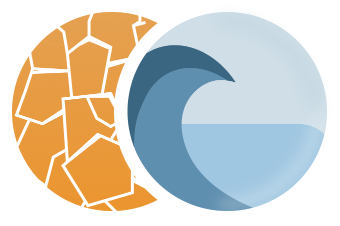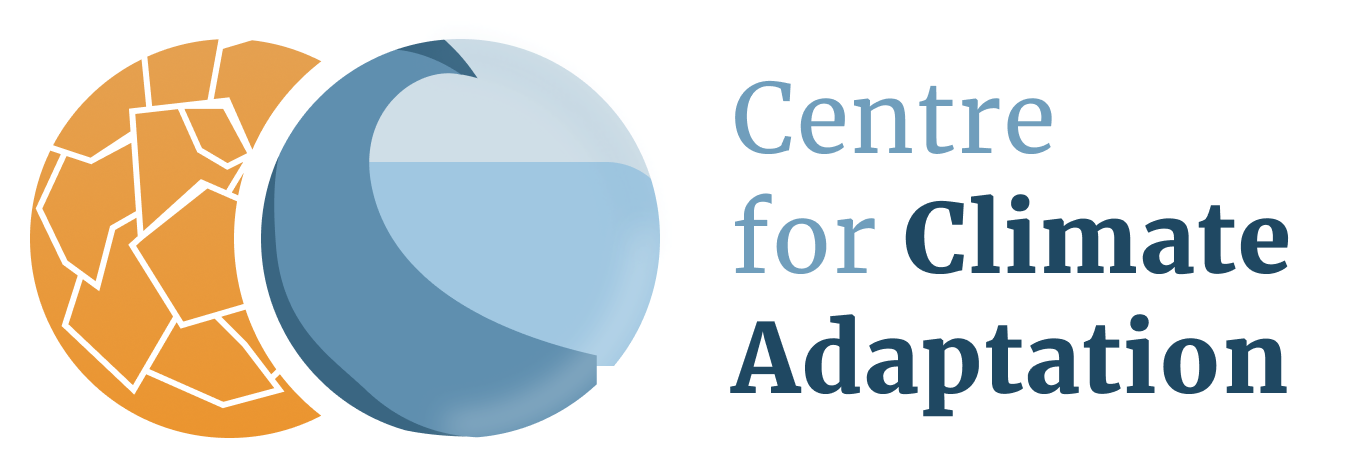- Home
- Countries
- Netherlands
- Salt intrusion
Netherlands
Salt intrusion
Definitions
Only some 2.5% of all water on the earth is fresh. At present, one third of fresh water used is groundwater. This fraction is growing because the demand of fresh groundwater increases due to the rise of world population and economic growth, the loss of surface water due to contamination, the availability of huge quantities, and the high quality relative to surface water. Disadvantages of groundwater are the high mineral content, the potential of land subsidence, high extraction costs, and finally, the threat of salt water intrusion (6).
Groundwater is classified according to chloride concentration into fresh water (< 300 mg/l), brackish water (300 – 10,000 mg/l) and saline water (>10,000 mg/l) (7). The drinking water standard in the European Community is a chloride concentration of 250 mg/l (17). A chloride concentration equal to approximately 100 mg/l indicates the taste limit of human beings (8), whereas ocean water has a chloride concentration of 19,000 mg/l.
Causes of salt intrusion
A number of processes affects salt water intrusion in coastal aquifers:
- sea level rise (13,14);
- over-exploitation of drinking water reservoirs to keep up with the increasing demand for domestic water (13,15);
- land subsidence (14);
- change in river discharge (10);
- change in precipitation / evaporation ratio (16);
- environmental conditions in the Holocene (13,14);
- disruption of the natural hydrological system like the upstream intake of water from rivers, which reduces their discharge. This can lead to upstream migration of seawater in the river mouth, and shoreline retreat due to the reduction of the sediment load to the coastal zone (13);
- the number and depth of ditches and the amount of water pumped from ditches, since the seepage flux is proportional to the difference between sea level and ditch water level (12).
Climate change versus human activities
Worldwide, excessive over-pumping of especially coastal aquifers is the most important anthropogenic cause of salt water intrusion. Furthermore, reducing recharge areas to develop touristic centres causes a decrease of outflow of fresh groundwater, inducing an inland shift of the salt water wedge. In some areas, land reclamation (e.g. in the Netherlands from about the 17th century on) caused a lowering of piezometric heads, and subsequently, sea water has rapidly intruded the coastal aquifer ever since (6).
With respect to the effect of over-pumping, the impact of a (relatively small) sea level rise (e.g. 50 cm per century) on the aquifer will be of marginal importance. However, changes in global mean sea level will probably directly affect the coastal surface water system, rivers and estuaries (6).
The impacts of sea level rise must be considered in relation to impacts of human activities. It is very likely that not sea level rise, but human activities will cause a severe salinization of most coastal aquifers in the future (6). Salt water intrusion due to sea-level rise is mostly a very slow process that may take several centuries to reach equilibrium (21). Even small rates of groundwater pumping from coastal aquifers are expected to lead to stronger salinization of the groundwater than sea-level rise during the 21st century (22).
Vulnerabilities The Netherlands - Current, autonomous salinization of groundwater
Seepage of salt water into inland water systems of the Netherlands takes place as a result of the reclamation of polder areas during the period 1550–1900 A.D. This process is called autonomous salinization. Salt loads into the surface water system of the polders are determined by seepage flux and groundwater salinity. Large salt loads (>1000 kg Cl−/ha/y) already occur in the present situation in the deep polders with surface levels lower than −5 m msl, like the Zuidplas polder, Haarlemmermeer polder and Groot‐Mijdrecht polder and in the southwestern islands (18).
In the course of time deeper and more saline groundwater is flowing slowly to the surface since the beginning of the reclamations; therefore, salt loads into the surface water system are continuously increasing. This autonomous salinization process will continue for the next hundred years in the large and deep polder areas. In some parts of these polders, salt loads will double within the next hundred years because of this (18).
The increasing salinization of fresh groundwater resources used for drinking water purposes is already a problem. In the past, groundwater extractions in the dunes were closed due to upconing of saline groundwater and river water from the Rhine was artificially infiltrated into the aquifers to secure fresh groundwater volumes. Saline groundwater upconing and the decrease of fresh water volumes will continue due to the changes likely in the future (18).
Vulnerabilities The Netherlands - Future projections of groundwater salinization
The autonomous salinization is only caused by increasing salt concentrations, whereas seepage fluxes remain relatively constant. However, seepage fluxes are significantly changed by climate change, land subsidence and sea level rise, because these processes cause hydraulic heads and phreatic water levels to change. Model results show that the impact of sea level rise is limited to areas within 10 km of the coastline and main rivers (18).
In the areas that are subject to salinization, the total salt load will increase with 6% in the year 2100 compared with the year 2000 due to the autonomous process. Climate change and 0.85 m sea level rise may increase the salt load compared to the year 2000 by 40%–50%; under more extreme scenarios of climate change and 2 m sea level rise the increase may even be 130%–140%. Along the southwest coast of the Netherlands, salt loads will double in some parts of the deep and large polders by the year 2100. due to sea level rise (18).
The future increase of salt loads will cause salinization of surface waters and shallow groundwater and put the total volumes of fresh groundwater volumes for drinking water supply, agricultural purposes, industry, and ecosystems under pressure. Saline seepage may also affect the salinity of the root zone. Especially those areas where thin, fresh water lenses (from rainfall) that lie on top of saline groundwater will be vulnerable to increasing saline seepage and decreasing recharge [Oude Essink et al., 2009]. For example, the areas economically important for Dutch flower bulbs or orchard trees will be very sensitive to changes in salt concentration (18).
Vulnerabilities The Netherlands - Future projections of salinization lakes IJsselmeer and Markermeer
Lake IJsselmeer and Lake Markermeer form the largest artificial freshwater system in both the Netherlands and northwestern Europe and are fed primarily by the Rhine River. Both lakes are an important source of freshwater for drinking water production, agriculture and industry in the Netherlands.
The main inflows of chloride into Lake IJsselmeer include the IJssel River (11% of the Rhine discharge), drainage from the surrounding polders and seepage from the Wadden Sea through the tidal closure dam. The main inputs of water and chloride to Lake Markermeer are exchange with Lake Ijsselmeer (predominantly Rhine River water), rainfall and polder drainage (19).
Salinization of these lakes in 2050 has been estimated for the least and most far-reaching climate change scenario developed by the Royal Dutch Meteorological Institute (KNMI) (20), and for 0.15-0.25 m and 0.20-0.35 m sea-level rise, respectively. Changes in river discharge have been modelled, but constant design water levels in Lake Ijsselmeer have been assumed (19).
Chloride concentration changes due to:
- changing hydrology of the Rhine;
- changing rainfall and precipitation patterns;
- changing intrusion from the Wadden Sea; and
- changing salt input from polders directly draining to Lake IJsselmeer.
Model results show that a large fraction of the chloride change in Lake IJsselmeer is due to the increased seepage of salt water from the Wadden Sea and the changing hydrology of the Rhine. Rising sea levels (and the associated increase in head difference between Wadden Sea and Lake IJsselmeer) cause more chloride to enter Lake Ijsselmeer across the tidal closure dam. The modelling suggests that the reduction of through flow in Lake IJsselmeer during dry summers as a result of reduced Rhine flows causes this brackish water to be transferred further upstream in Lake IJsselmeer. Moreover, the reduced summer flows also cause less dilution of the chloride load of the Rhine River, resulting in a higher chloride concentration in the river water which propagates in the IJssel branch and Lake IJsselmeer. The simulation shows that chloride concentrations in Lake Markermeer are far less influenced by climate change (19).
The results show that in order to keep Lake Ijsselmeer sufficiently fresh for year round drinking water production (limit 150 mg/l chloride), a further reduction of salt emissions to the Rhine or a reduction of seepage from the Wadden Sea through technical engineering measures is required. The modelling shows that Lake Markermeer is actually a more suitable source for drinking water production than Lake Ijsselmeer as it is less susceptible to climate change induced salinization (19).
Vulnerabilities - Agriculture
Sea level rise will cause an increase of the salt water seepage in the coastal zones of the Netherlands, and an increase of the salt water intrusion in the main rivers in combination with lower river discharges in summer. Both types of salinization can harm salt sensitive crops in agriculture and horticulture. However, recent findings show that damage to crops due to salinization, in areas with a freshwater lens and well drained fields, are relatively low (4).
The impact of sea level rise will be greatest if the polder is located within a few kilometers of the coast, the phreatic level is a few meters below Dutch Ordnance Datum (NAP), hydraulic resistance in the upper layer is low, and the permeability of the aquifers is high (11).
Sea level rise can cause a reduction of freshwater pockets under arable land in the low lying western part of the Netherlands, due to an increase of brackish seepage and a decrease of recharge. Since these fresh water pockets are drained by canals, they can respond quickly to climate change (12). However, the increase in precipitation may result in more recharge in winter, which may counteract the expected increase in seepage (11).
Various agricultural/horticultural crops/plants impose different requirements on the salinity of the irrigation water, the quantity of irrigation water and the groundwater level. In particular, tree nurseries, the horticultural sector (under glass) and the fruit growing sector are highly sensitive to increasing salt concentration, and even at low concentrations considerable damage can occur. In the dry summer of 2003, tree nurseries located in the middle of the Netherlands were confronted with damage due to brackishness. Grass, grains and sugar beet are relatively tolerant to the concentration of salt in the soil (5).
The differences in intensity of the seepage flow (salt load) between an average and an extremely dry year in the current situation are considered to be small. The highest salt burden currently occurs in the coastal area of Friesland and Groningen, the IJsselmeerpolders, Zeeland and the Haarlemmermeerpolder (5).
The agricultural areas in Groningen, Friesland, North Holland and South Holland are the most dependent on water supply from the surface water and would therefore seem to be the most prone to damage due to brackishness. Sensitive crops are frequently grown in these areas (1,5).
The expected increase in freshwater head in the coastal groundwater system and the change in seepage and salt load to the surface water system can cause an increase in the risk of uplifting and cracking of the Holocene top layer (10).
Vulnerabilities - Drinking water supply
The expected rise in salt intrusion will increasingly result in unusable inlet points for agriculture and drinking water (5). Climate change impacts on salinization and the long-term availability of drinking water resources along the river Lek, a tidal branch of the Rhine delta, have been assessed for 2050. It was found that all current locations for fresh water abstraction are increasingly vulnerable to salt intrusion caused by the combination of sea level rise and decreasing river discharges. It was also found that diverting a higher fresh water discharge from one of the other Rhine branches to the Lek of several tens of cubic meters per second reduces the risk of salinization at the upstream inlet locations. However, the increased influence of seawater intrusion on the drinking water inlets cannot be fully compensated for by this measure (23).
Adaptation strategy - Technical countermeasures
Countermeasures to compensate the salinization process should be taken in time, since the time lag is considerable (several decades to centuries) before these measures result in effective changes in the salinity distribution of the aquifer. The following technical countermeasures to prevent or retard the salinization process can be considered (6):
- Freshwater injection barriers through injection or (deep-well) infiltration of fresh (purified sewage) water near the shoreline. This is already applied in Israel, at Long Island and in Los Angeles;
- Extraction of saline and brackish groundwater. However, this could regrettably result in undesirably low piezometric heads, especially in shallow coastal aquifers. Furthermore, the disposal of the extracted saline or brackish groundwater could meet with problems;
- Modifying pumping practice through reduction of withdrawal rates or adequate relocation of extraction wells. The desired extraction rate should preferably be extracted by well-distributed shallow wells to prevent excessive upconing. Groundwater withdrawal for domestic, agricultural and industrial water supply may not be reduced during periods of droughts, so that salt water intrusion tends to occur anyway;
- Land reclamation, thus creating a foreland where a freshwater body may develop which could delay the inflow of saline groundwater;
- Increase of (artificial) recharge in upland areas to enlarge the outflow of fresh groundwater through the coastal aquifer, and thus, to reduce the length of the salt water wedge;
- Creation of physical barriers, such as sheet piles, clay trenches and injection of chemicals. This solution is only applicable in shallow aquifers and at high cost. A small physical barrier by injecting pumping cement grout has been implemented at Okinawa-Jima Island in Japan.
It is not easy to stop salinization of the groundwater and surface water system: a combination of different human interventions is possibly needed to decrease the salt load for the future. As such, the Dutch will very likely have to cope with much more saline groundwater in their coastal water system than at present (18).
Adaptation strategy - Agriculture
Currently available or conceivable adaptation strategies to the salinization of agricultural land are:
- improving the efficiency of freshwater use in areas subject to salinization, including the retention and storage of rain water, a better separation of fresh and salt water, and the increase of surface water levels to suppress salt water seepage (2);
- the growing of halophyte cultures (2);
- the growing of macro- and micro-algae (2);
- the growing of bait for fish in saltwater basins on the land (2;
- the conversion of salted arable land to grassland, nature or sea culture parks (2);
- irrigation using brackish water: a recent study into the possibility to use brackish rainwater for irrigation in Zeeland and west Brabant showed that, in contrast to the established knowledge, irrigation using brackish water is profitable for flower bulb growing, vegetable growing and salt-sensitive arable crops like onion and carrot (3);
- use or design of salt tolerant crops;
- changing land use.
The surface water system in low-lying areas probably has to be flushed more frequently in the future to dispose the excess of salt, which originates from the deeper groundwater system, affecting (10).
References
The references below are cited in full in a separate map 'References'. Please click here if you are looking for the full references for the Netherlands.
- MNP (2005), in: Nillesen and Van Ierland (2006)
- Langeveld et al. (2005), in: Nillesen and Van Ierland (2006)
- Clevering (2005b), in: Nillesen and Van Ierland (2006)
- Clevering et al. (2005c), in: Nillesen and Van Ierland (2006)
- Bresser (2006)
- Oude Essink (2001)
- Stuyfzand (1986), in: Oude Essink (2001)
- Todd (1980), in: Oude Essink (2001)
- Van Dijk et al. (2009)
- Oude Essink (2008), in: Van Dijk et al. (2009)
- Oude Essink, 2003, in: Van Dijk et al. (2009)
- Maas (2007), in: Van Dijk et al. (2009)
- Post (2005), in: Van Dijk et al. (2009)
- Oude Essink (2001b), in: Van Dijk et al. (2009)
- Abd-Elhamid and Javadi (2008), in: Van Dijk et al. (2009)
- Oude Essink (2007), in: Van Dijk et al. (2009)
- Council European Union (1998)
- Oude Essink et al. (2010)
- Bonte and Zwolsman (2010)
- Van Den Hurk et al. (2006); Van Den Hurk et al. (2007), both in: Bonte and Zwolsman (2010)
- Webb and Howard (2011), in: IPCC (2014)
- Ferguson and Gleeson (2012); Loaiciga et al. (2012), both in: IPCC (2014)
- Van den Brink et al. (2019)




